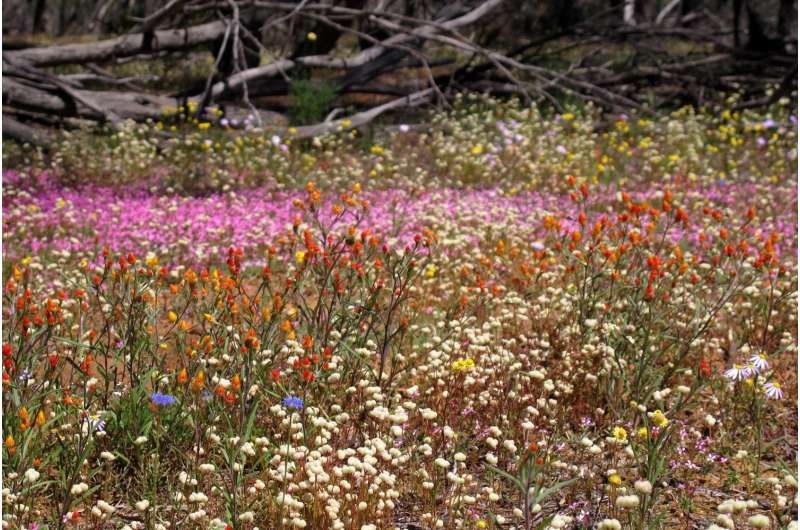Sowing new seeds of knowledge about the drivers of plant diversity

A new study of Australian wildflower communities is improving understanding of how climatic stress controls plant diversity, based on the strategies different species use to survive, grow and reproduce.
"Plant diversity tends to be lower in more stressful environments," says University of Queensland School of Biological Sciences' lecturer, and CSIRO researcher, Dr John Dwyer.
"However, we have a surprisingly poor understanding of the processes behind this observed pattern."
The study by Dr Dwyer and co-author Professor Daniel Laughlin from the University of Waikato in New Zealand, aims to advance ecological knowledge to better manage Australia's unique ecosystems and landscapes.
"We viewed each plant species as a combination of different characteristics, or 'traits', that determines how they tolerate stress, obtain resources, grow and reproduce," he said.
"Using this approach, we studied combinations of traits within natural wildflower communities along gradients of temperature and rainfall in the Western Australian wheatbelt."
The researchers predicted that many species with different combinations of traits should be able grow together in cool, wet areas where conditions are relatively benign.
"As we moved into more arid communities, we predicted that correlations between traits would strengthen, indicating that species need to combine traits in specific, coordinated ways to tolerate the harsher conditions; and indeed that is what we found," he said.
"Specifically, in semi-arid communities the height of species was positively correlated with seed mass.
"This makes sense, because growing tall is risky in drier regions, but having larger seeds reduces this risk because they are packed with more resources from the mother plant."
Dr Dwyer says the study is not only relevant to Western Australian wildflower communities.
"The next step is to investigate trait coordination in other systems, such as rainforests.
"We also think our approach can be used to identify native plant species that are likely to struggle under climate change, and to select hardy species for restoration projects."
The study is published in Ecology Letters.
More information: John M. Dwyer et al, Constraints on trait combinations explain climatic drivers of biodiversity: the importance of trait covariance in community assembly, Ecology Letters (2017). DOI: 10.1111/ele.12781
Journal information: Ecology Letters
Provided by University of Queensland

















